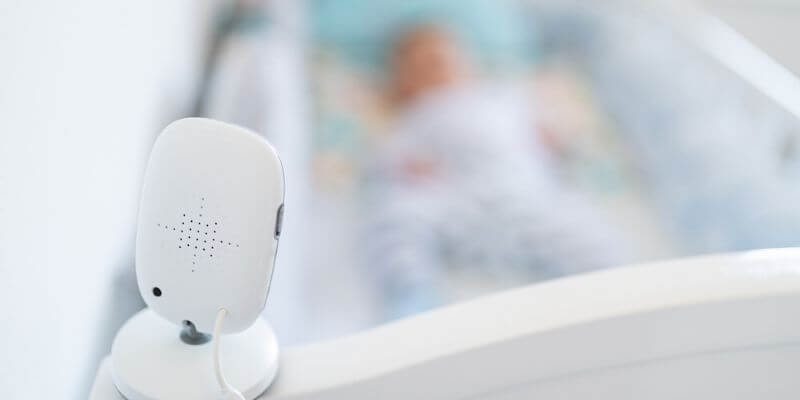
Being able to know that your baby is safe and ok is a top priority for all parents.
This is why parents buy a good baby monitor in order to see and hear that there little one is happy and has no problems that the need to address.
Table of Contents
What is a Baby Monitor?
A baby monitor is a device that allows you to hear, or see, your child when you are not in the same room. There are normally two parts; a transmitter and a receiver unit. The transmitter is located in the room where the infant sleeps. The transmitter sends images and/or audio to the receiving unit.
These monitors transmit using an analogue or digital signal. These days, most baby monitors use digital signals.
When Were Baby Monitors Invented?
The first electronic baby monitor was invented in 1938 and was called the Radio Nurse made by the Zenith Radio Corporation.
Types of Baby Monitors to Compare
- Video vs Audio
- Analogue vs Digital Signals
- Wired vs Wireless
- Plus many other brand model types to review
What Are the Benefits Of A Baby Monitor?
1. Peace of Mind
Having peace of mind that your baby is fine is the most obvious benefit. But, it cannot be understated how a toddler monitor can give you reassurance that your baby is safe and secure when in a different part of your home. Babies will soon let you know if they need your attention. The right monitor will be worth its weight in diamond encrusted gold!
2. Monitors Give You Time to Do Things
You can carry on with jobs around the house, for example making dinner, or clearing up those toys in your front room. Knowing your little one is perfectly fine and safely asleep in their room will allow you to get job done or possibly even relax! If your child is in another room, on a different floor in your house or flat, monitors can save you checking on them every ten to fifteen minutes. When you have a child you need to make the most of your baby free time.
3. Can Help Sleep Train a Child
Babies have different noises and cries. Especially when they are settling down to sleep. Knowing what type of cry will help you decide if you need you to attend to them or not. This helps avoid disturbing them unnecessarily. Particularly when they have naps during the day.
Concerns About Baby Monitors
- Interference Issues – An analogue signal can receive interference from other devices, such as radios or microwave ovens. Digital monitors encrypt the audio or video signal and are less likely to have interference problems.
- Hacking Issues – WiFi enabled smart baby monitors have had problems of being hacked due to poor security measures in place. These types of events have been reported in various media outlets like the BBC and advise on how to secure your monitors was provided by the National Cyber Security Centre.
- Cord Strangulation – Unfortunately some parents have left the cord of a baby movement monitor hanging in a cot that ended up wrapping around a baby’s neck when they were moving around. The US passed a manufacture standard ASTM F2951 – 19 and The European Child Safety Alliance published a product safety guide to help parents.
